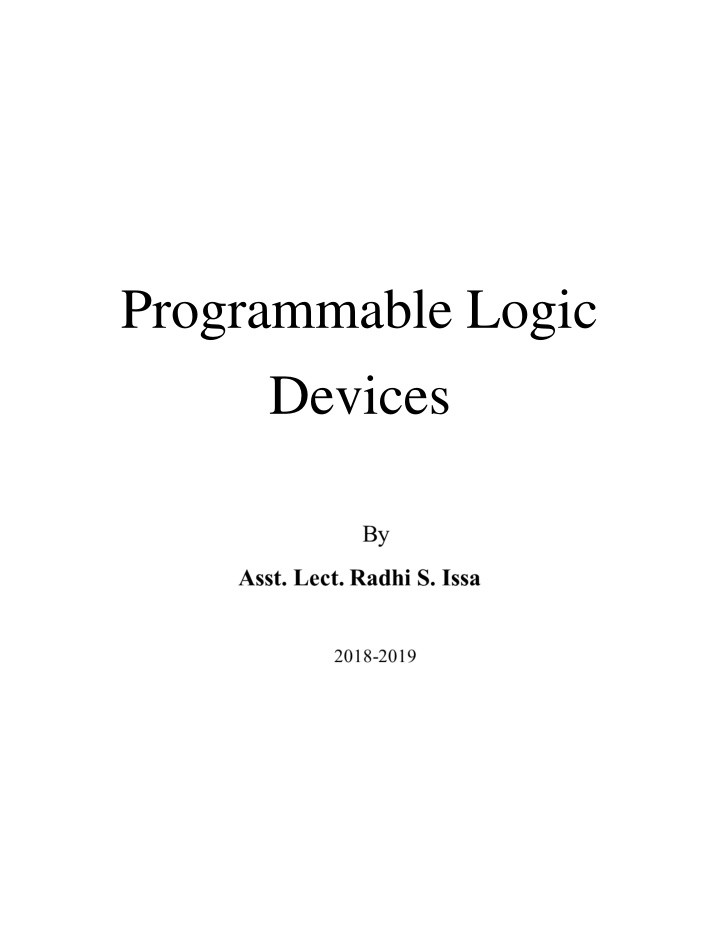
Programmable Logic Devices and Their Types
Learn about programmable logic devices (PLDs) and their types including PROM, PLA, PAL, CPLD, and FPGA. Explore the general structure of PLDs, their programming process, and different types available in the market. Discover the circuit diagrams and symbolic representations of PLDs to grasp their functionalities and applications.
Download Presentation

Please find below an Image/Link to download the presentation.
The content on the website is provided AS IS for your information and personal use only. It may not be sold, licensed, or shared on other websites without obtaining consent from the author. If you encounter any issues during the download, it is possible that the publisher has removed the file from their server.
You are allowed to download the files provided on this website for personal or commercial use, subject to the condition that they are used lawfully. All files are the property of their respective owners.
The content on the website is provided AS IS for your information and personal use only. It may not be sold, licensed, or shared on other websites without obtaining consent from the author.
E N D
Presentation Transcript
Programmable Logic Devices
Programmable Logic Devices Fig. (1) General structure of PLDs Programmable Logic Device (PLD): is an integrated circuit with internal logic gates and/or connections that can in some way be changed by a programming process Examples: PROM Programmable Logic Array (PLA) Programmable Array Logic (PAL) device Complex Programmable Logic Device (CPLD) Field-Programmable Gate Array (FPGA) A PLD s function is not fixed and can be programmed to perform different functions. 75
Types of PLDs: Device PROM And-array Fixed OR-array Programmable FPLA programmable Programmable PAL programmable Fixed - FPGA programmable PLA Fixed Fixed FPLA= FieldPLA 76
Fig. (2) a) Circuitdiagram (b) Symbolic representation 77






















